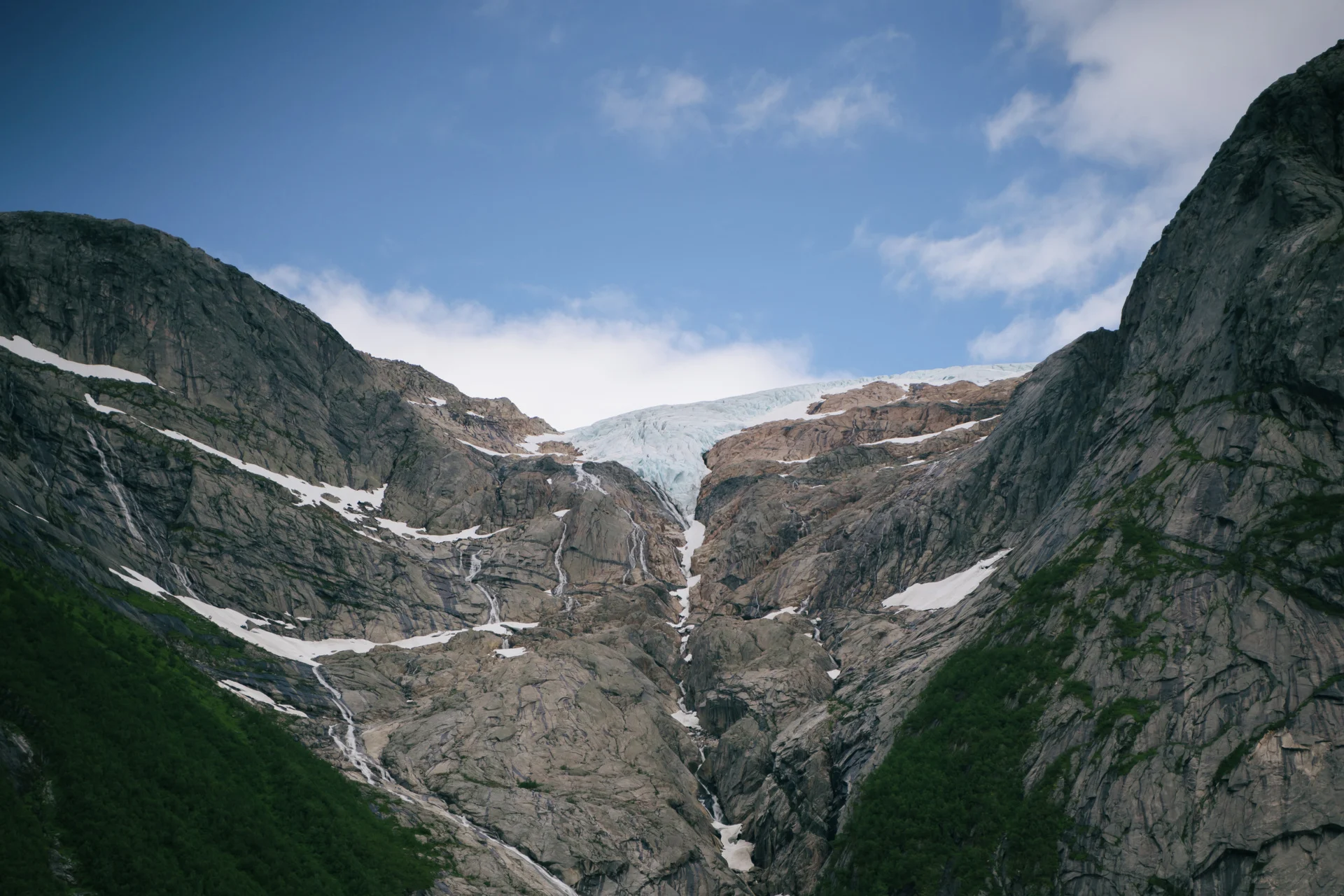Jostedalsbreen glacier
Previously an icy highway for isolated fjord dwellers, Europe's biggest glacier is now a skiers paradise.

Imagine dressing up and packing your bag for a dance in the neighbouring village. Then, since there are no roads, putting on your skis, going up on a glacier and down again on the other side.
Jostedalsbreen glacier is Europe's largest. The entire glacial area totals about 800 square kilometres: a main glacier of about 500 square metres, plus surrounding glaciers and glacier arms. Although it is now a major skiing centre, the glacier played an important historical role for people in the local fjords.
The glacier was a major regional transport route in the times before roads had been built across Western Norway. Skiing across Jostedalsbreen was the easiest path for getting between isolated fjord settlements in Nordfjord and Sogn districts. The only alternative the residents had was travelling by water, which involved a far more taxing task of rowing boats in and out of the very long arms of the fjord.
In 1788, Ole Bøsasva was the first person to walk the length of Jostedalsbreen. Today, glacier walkers can choose a number of shorter or longer routes. For ski tourists, May is a good month to visit the glacier. Several popular ski runs are arranged annually, such as the Josten end-to-end, Olden circular and Loen circular.
Jostedalsbreen spans the municipalities of Luster, Sogndal, Jølster and Stryn. Briksdalsbreen, one of its glacier arms, also reaches Olden at the head of Nordfjord.
After advancing and destroying large stretches of cultivated land in the 18th century, the glacier shrank markedly up to the 1960s. It began expanding again at the end of the 1990s, as winter snowfall increased. Recently the glacier has shrunk again, due to the combination of drier winters and hotter summers.
There are three museum and glacier centres in Jostedalsbreen: Breheimsenteret in Jostedalen, Norsk Bremuseum in Fjærland and Jostedalsbreen Nasjonalparksenter in Stryn.